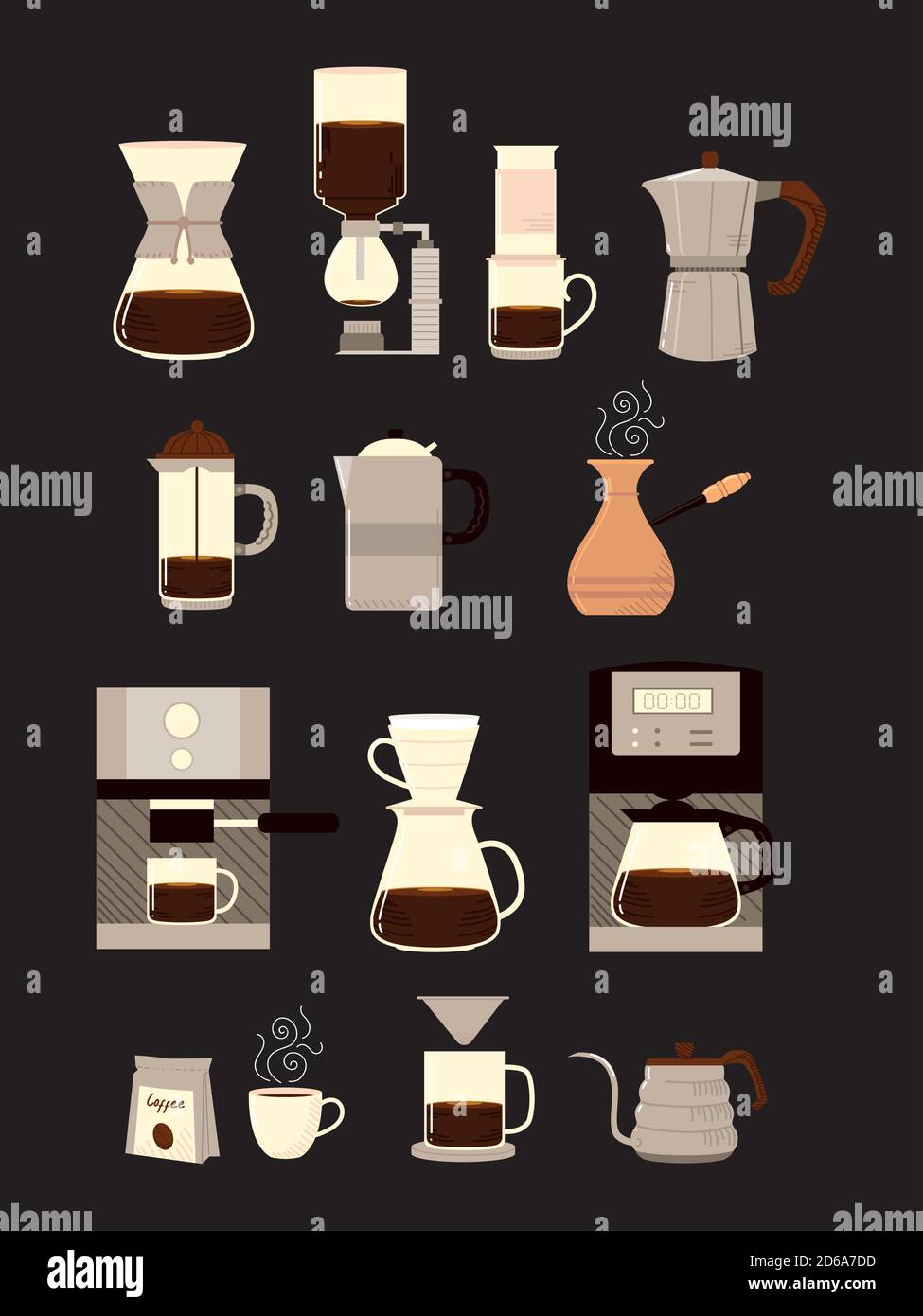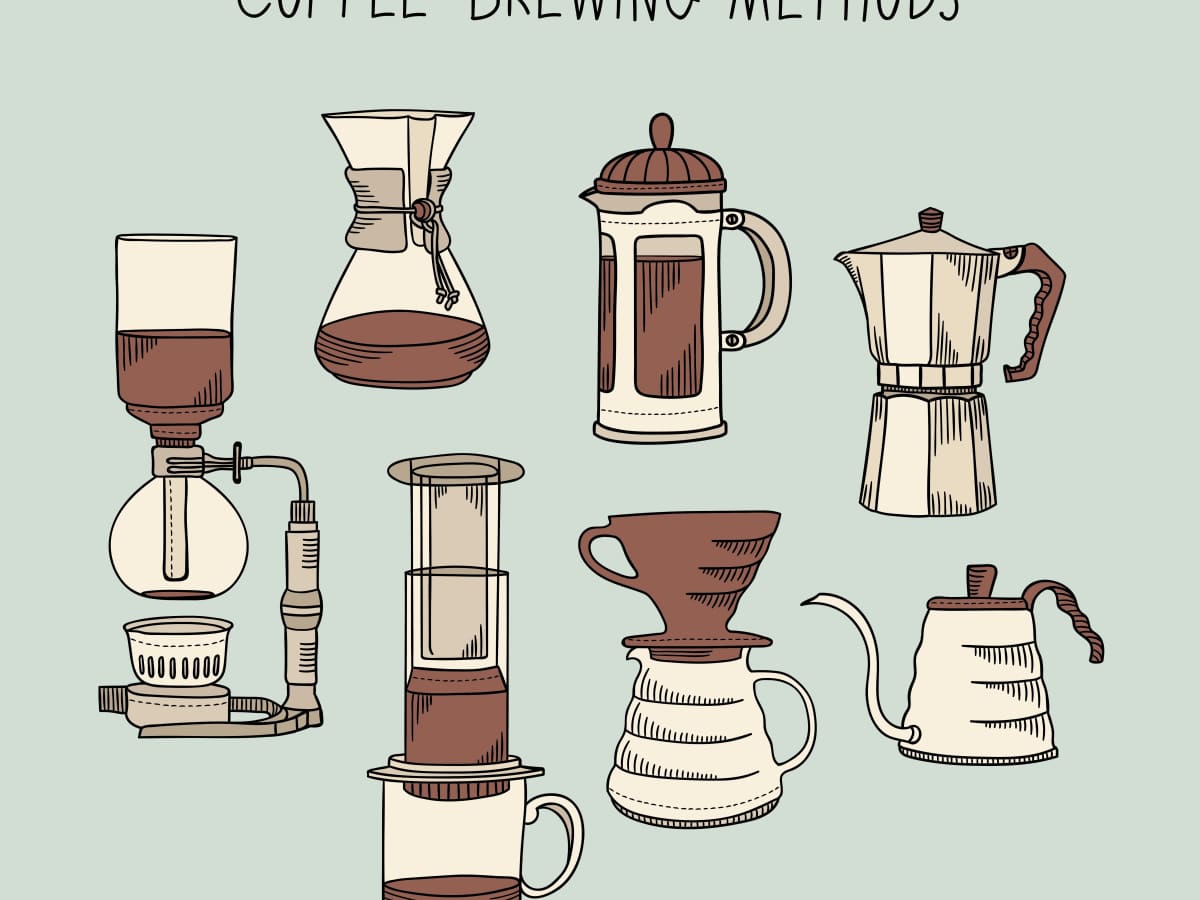Coffee Brewing Methods Demystified: From French Press to Cold Mixture
Wiki Article
The Scientific Research Behind Coffee Developing: Just How Temperature Level and Time Affect Your Drink
Understanding the science behind coffee brewing discloses that temperature and time are not plain variables yet crucial components that determine the drink's flavor account and total top quality. The optimum developing temperature level typically falls between 195 ° F and 205 ° F, while the period of removal varies considerably across various approaches. This interaction of elements can cause a mug that is either delightful or unsatisfactory. As we check out the subtleties of these components, the question emerges: exactly how can one efficiently balance temperature level and time to accomplish that ideal brew?The Chemistry of Coffee Extraction
The chemistry of coffee removal looks into the detailed procedures that change raw coffee beans into the fragrant beverage enjoyed worldwide. This makeover mainly entails the solubility of various substances existing in the beans, which are influenced by variables such as grind dimension, water top quality, and the brewing technique used.Throughout the brewing process, hot water works as a solvent, extracting soluble substances, including caffeine, sugars, acids, and lipids, from the coffee premises. Each compound adds to the taste profile, aroma, and body of the final drink. For example, acids are accountable for brilliant and tangy notes, while oils contribute to a rich mouthfeel.
The removal procedure is not uniform; different substances liquify at various rates. The initial stages of brewing essence acids and sugars, leading to an enjoyable acidity, while extended removal can bring about bitterness due to over-extraction of unfavorable compounds. Comprehending these chemical communications is essential for enhancing brewing methods, as the balance between removal time and water temperature level can substantially influence the general quality of the coffee. Ultimately, grasping the chemistry of coffee extraction is vital to achieving a tasty and well-rounded mug.
Ideal Developing Temperatures
Finding the best brewing temperature is necessary for unlocking the full potential of coffee tastes and fragrances - coffee brewing methods. Research suggests that the ideal range for brewing coffee exists in between 195 ° F to 205 ° F(90 ° C to 96 ° C) Within this array, the extraction process effectively liquifies the desirable soluble substances in coffee beans, causing a savory and well balanced cupBrewing at lower temperatures, such as below 195 ° F(90 ° C ), might lead to under-extraction, yielding an acidic and weak brew with low-key flavors. Conversely, brewing at temperatures surpassing 205 ° F(96 ° C) can lead to over-extraction, generating a harsh and bitter preference as a result of the excessive dissolution of unwanted compounds, such as tannins.
Furthermore, the perfect developing temperature level can differ depending on the coffee bean type and roast level. For example, lighter roasts frequently benefit from slightly greater temperature levels to boost their intricate taste profiles, while darker roasts might be better fit to reduced temperatures to alleviate bitterness.
Ultimately, keeping precision in developing temperature levels is important for attaining a harmonious balance of flavors, guaranteeing that every cup of coffee delivers a rewarding sensory experience.
Effect of Brewing Time
Brewing time plays an essential function in establishing the taste profile and total high quality of coffee. The extraction process, which influences the preference, scent, and body of the drink, is mainly dependent on just how long the coffee grounds touch with water. Much shorter brewing times can lead to under-extraction, causing a sour or weak taste, as inadequate soluble compounds are dissolved. Conversely, long term developing can cause over-extraction, where unfavorable compounds are launched, resulting in a bitter or astringent preference.Optimal developing time differs depending upon the method made use of and the grind dimension of the coffee. A French press commonly needs about four mins, while espresso removal is generally finished within 25 to 30 secs. It is necessary to adjust developing time in combination with various other variables, such as water temperature and coffee-to-water proportion, to achieve the wanted taste profile.
Comprehending the effect of brewing time makes it possible for coffee fanatics to refine their brewing strategies, eventually boosting the sensory experience of their cup (coffee brewing methods). With mindful attention to this variable, one can open the full possibility of the coffee, revealing its unique characteristics and nuances
Brewing Methods and Their Effects

For circumstances, approaches like French press and cold brew permit for a much longer steeping time, causing a fuller body and durable flavor due to enhanced extraction of oils and soluble solids. Conversely, espresso developing utilizes high pressure and a shorter extraction time, creating a concentrated shot that highlights intense flavors and a rich crema.
Pour-over techniques, such as Chemex or V60, supply an even more regulated extraction procedure, permitting the maker to adjust flow rate and water circulation, which can improve brightness and quality. Percolation techniques cycle water with the coffee grounds multiple times, leading to a stronger, typically bitter flavor.
Lastly, making use of paper filters versus steel filters can additionally affect the final preference; paper filters typically produce a cleaner mug by trapping oils and fine fragments, while metal filters allow even more oils to travel through, adding to a fuller mouthfeel - coffee brewing methods. Comprehending these nuances can boost the coffee experience considerably
Tips for Refining Your Mixture
A well-executed mixture can transform also the easiest coffee into check my site an amazing experience. To accomplish this, attention to information is crucial. Beginning with top notch, fresh roasted beans, as their taste more information account reduces over time. Grind the beans just before making to optimize quality, making sure the grind dimension matches your developing method-- coarser for French press and finer for coffee.Water high quality plays an essential function; use filteringed system water devoid of impurities. The optimal developing temperature level varies in between 195 ° F and 205 ° F(90 ° C to 96 ° C ) Too hot can swelter the coffee, while as well trendy may under-extract tastes.
Timing is just as vital. For immersion approaches, steeping for 3 to 5 mins is ideal, whereas drip techniques commonly take about 5 minutes. Try out mixture times to find your favored toughness.

Verdict
In recap, the complex relationship between temperature level and time is extremely important in the coffee developing process. Adhering to ideal brewing temperatures between 195 ° F and 205 ° F, alongside precise timing customized to every method, ensures the desired taste account is attained. Recognizing these clinical principles equips individuals to improve their brewing techniques, inevitably causing a more pleasurable and balanced coffee experience. Mastery of these aspects is vital for any kind of coffee enthusiast looking for quality in their beverage.Understanding the science behind coffee developing exposes that temperature and time are not plain variables but essential aspects that determine the drink's flavor profile and overall top quality. Recognizing these chemical interactions is essential for maximizing brewing strategies, as the balance between removal time and water temperature can significantly influence the total quality of the coffee.Brewing time plays a pivotal duty in figuring out the taste account and total quality of coffee. By focusing on these aspects-- bean quality, grind dimension, water temperature level, steeping time, and ratio-- you can elevate your coffee brewing process, resulting in a regularly superior cup.
In summary, the elaborate connection in between temperature level and time is extremely important in the coffee developing process.
Report this wiki page